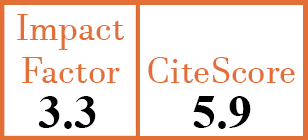Full Papers
Bibliometric insights into transforming the management of rheumatoid arthritis: three decades of progress against opportunistic infections
W. Hu1, Y. Xu2
- Guang’anmen Hospital South Campus, China Academy of Chinese Medical Sciences, Beijing, China. wenzhong.h.chn@outlook.com
- People's Hospital of Beijing Daxing District, Capital Medical University, Beijing, China.
CER18642
2025 Vol.43, N°9
PI 1611, PF 1621
Full Papers
PMID: 40737051 [PubMed]
Received: 19/02/2025
Accepted : 26/03/2025
In Press: 22/07/2025
Published: 18/09/2025
Abstract
OBJECTIVES:
The aim of this study was to investigate the research trends, patterns of opportunistic infections in rheumatoid arthritis (RA) and their impact on patient management strategies, especially in the context of the widespread use of DMARDs.
METHODS:
Research papers on RA and opportunistic infections were analysed by performing a literature search in the Web of Science Core Collection (WoSCC) database, covering the period from January 1, 1994 to December 31, 2023. Bibliometric analyses were performed using VOS viewer and Cite Space software, including country and institution analyses, journal and co-citation journal analyses, author and co-citation author analyses, and key word co-occurrence and clustering analyses.
RESULTS:
Two hundred and ninety-three research papers were analysed, and it was found that research publications on RA-associated opportunistic infections have shown a general upward trend over the past three decades, with a significant increase especially between 2007 and 2021. Japan, the United States, and China have the highest research output in this area, with institutions such as Yang Ming University and Taichung Veterans General Hospital being more active. Key word analysis revealed ‘infection’, ‘risk’, ‘treatment’, and ‘infliximab’ as research hotspots. Cluster analysis showed that tuberculosis, latent tuberculosis infection and hepatitis B virus were the focus of attention.
CONCLUSIONS:
Research on opportunistic infections in RA has shown a clear trend of growth and extensive international collaboration, reflecting a deep understanding of the risk of opportunistic infections in RA patients treated with DMARDs. Future studies should strengthen the identification of high-risk patient groups, the use of biomarkers, the balance of safety and efficacy in treatment regimens, and patient education to promote the optimisation of RA management strategies.



